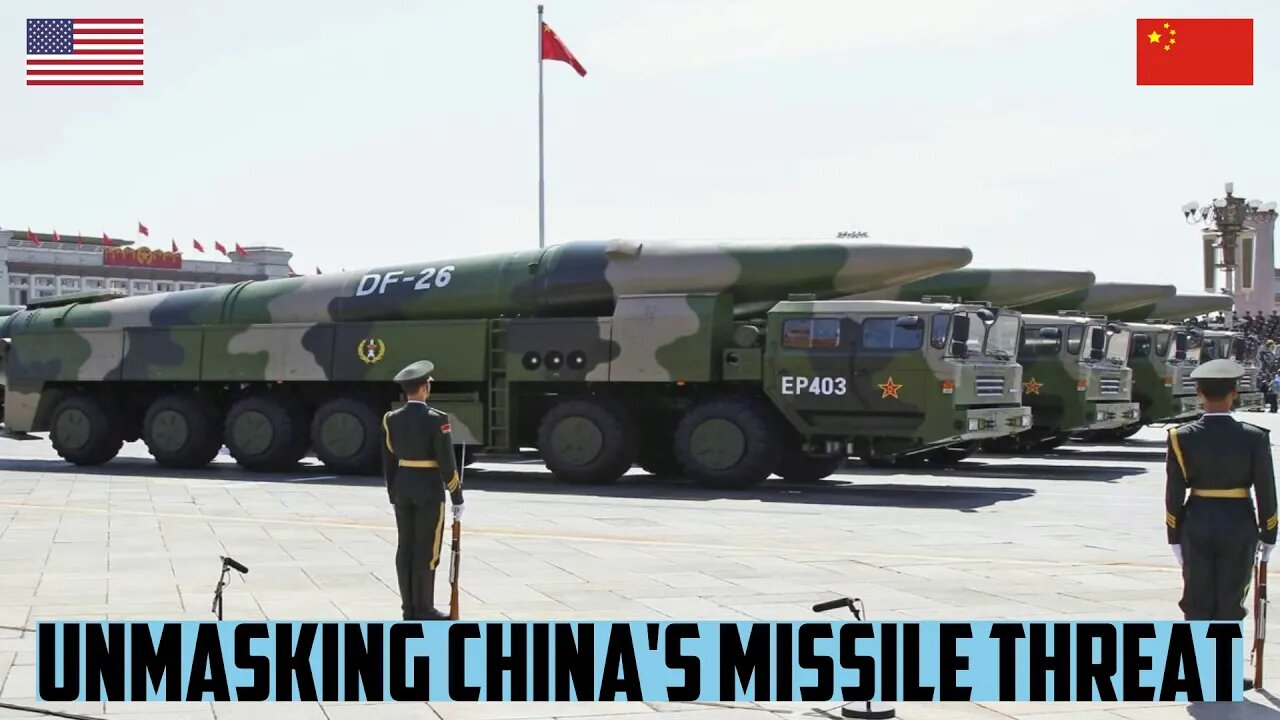Premium Only Content

US Launches Bold Strategy to Safeguard Asia's Security
Connect with us on Facebook: https://www.facebook.com/profile.php?id=100087951995959
Twitter: https://twitter.com/shieldwall_d
Chapters:
Unmasking China's Missile Threat - 0:00
Redefining the US Approach in Asia - 1:07
Strengthening Defense and Deterrence Capabilities - 4:26
Conclusion and Closing remarks - 5:26
In the modern era, the rise of China's military capabilities presents a profound challenge to the status quo, reshaping the strategic landscape in the Asia-Pacific region. This article explores the evolving US approach in response to China's burgeoning missile threat, specifically the US military's strategic shift from relying heavily on large bases to dispersing assets across smaller outposts. China's missile threat has surged in recent years, fundamentally changing the strategic calculus in Asia. The People's Liberation Army Rocket Force, the branch of China's military responsible for its missile arsenal, has experienced a significant surge in its capabilities. China now boasts over 1,300 ballistic missiles capable of reaching targets in the Asia-Pacific region, including major US bases in Guam. Notably, the development of hypersonic missiles, which can evade missile defense systems due to their unpredictable flight paths, further highlights the vulnerability of US bases. Consequently, the US has had to reassess its strategy to maintain deterrence and effectively respond to potential conflicts.
Redefining the US Approach in Asia.
The realization of the increasing vulnerability of larger military installations in the Asia-Pacific region has catalyzed a pivotal shift in US military strategy. This shift aims at mitigating the risk posed by China's advanced and expanding missile capabilities. The focal point of this new approach is the dispersal of assets - weaponry, troops, and command posts - across a variety of smaller, less conspicuous outposts in strategic locations. The dispersion strategy aims to complicate the decision-making matrix for Beijing. By not concentrating troops and assets in a single location, it becomes harder for China to land a decisive blow on the US military presence in the region. This approach effectively creates a moving target for China, requiring them to manage a more complex operation in the event of an attack. Moreover, the dispersion of forces also allows for more flexibility in troop and asset deployment. Smaller, more mobile units can be repositioned more swiftly, allowing for rapid response to changing battlefield conditions. This strategy aims to give the US an advantage in terms of adaptability and agility in conflict scenarios. Key to the implementation of this strategy is the creation of Air Mobility Teams. These are small, agile teams designed to quickly convert any location into a temporary military base. This includes creating landing strips for aircraft in remote locations and setting up crucial infrastructure, such as refueling points.
====================================
#shieldwall #shieldwalldefense
We appreciate all of our viewers and supporters. Thank you.
====================================
Fair use is the right to use a copyrighted work under certain conditions without permission of the copyright owner. The doctrine helps prevent a rigid application of copyright law that would stifle the very creativity the law is designed to foster. It allows one to use and build upon prior works in a manner that does not unfairly deprive prior copyright owners of the right to control and benefit from their works. Together with other features of copyright law like the idea/expression dichotomy discussed above, fair use reconciles the copyright statute with the First Amendment.
====================================
-
 LIVE
LIVE
Vigilant News Network
10 hours agoCOVID-Vaccinated Hit With Grave New Reality | Media Blackout
1,669 watching -
 1:26:31
1:26:31
Josh Pate's College Football Show
9 hours ago $3.29 earnedSEC Disaster Saturday | Major CFP Earthquake Coming | Officiating Is A Disaster | New Studio Debut
32.7K2 -
 1:43:05
1:43:05
Adam Does Movies
13 hours ago $4.94 earnedGladiator II Spoiler Conversation With Hack The Movies
30.1K1 -
 24:10
24:10
Bwian
13 hours agoI Don't Know What I'm Doing in Fortnite, But I Still Won...
23.7K1 -
 19:30
19:30
DeVory Darkins
15 hours ago $43.52 earnedJoe Rogan MOCKS The View as Bill Maher HUMILIATES Woke Scientist
99.1K139 -
 11:25:41
11:25:41
Scottish Viking Gaming
16 hours agoSUNDAY FUNDAY | Jump into my Sons of the Forest Game | DOO EET NOWWA!
96.2K1 -
 24:01
24:01
Winston Marshall
4 days agoThe TRUTH About The UK Farmer Protest What No One Is Talking About...
86.4K253 -
 3:21:56
3:21:56
Tate Speech by Andrew Tate
21 hours agoEMERGENCY MEETING EPISODE 93 - ME TOO!
307K211 -
 3:21:42
3:21:42
FRENCHY4185
16 hours agoPRESTIGE AND CAMO GRIND : BLACK OPS 6
84.8K2 -
 1:29:47
1:29:47
Real Coffee With Scott Adams
16 hours agoEpisode 2669 CWSA 11/24/24
111K45